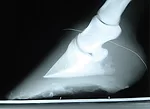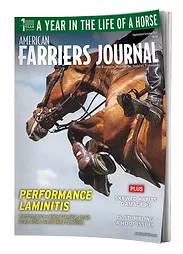Advertise Follow Us
American Farriers Journal

View Archived Issues
September/October 2025
Volume: 51
Edition: 6
American Farriers Journal is the “hands-on” magazine for professional farriers, equine veterinarians and horse care product and service buyers.
-
Table Of Contents
Table Of Contents
Trimming & Shoeing“Misguided Practices” are Damaging Horses’ Coffin Bones
Keeping P3 closer to the ground increases the likelihood of morphologyRead MoreA Year in the Life of a Horse
An intimate chronicle of hoof care, training & partnership through a farrier’s eyeRead MoreFarriery & the Equine Gut: How Nutrition Supports the Hoof
Vitamins & minerals play key roles in growing strong, healthy hoovesRead MoreLamenessDistinguishing Equine Cervical Spine Problems & Poor Gait Quality
The association between dysfunctions and disorders of the neck, back and pelvis with the farrier’s workRead MoreIn MemoriamHall of Fame Farrier Ray Legel Passes Away
Horseshoer & writer was co-founder of the Iowa Professional Farriers AssociationRead MoreUnderstanding Laminae Strain in Sport Horses
Recognizing & addressing performance-related laminar inflammationRead MoreResearch Journal: September 2025
The information, ideas and opinions expressed are those of the author and do not necessarily represent those of the United States Department of Agriculture.Read More -
Featured Articles
Featured Articles
Understanding Laminae Strain in Sport Horses
Recognizing & addressing performance-related laminar inflammationRead MoreTrimming & Shoeing“Misguided Practices” are Damaging Horses’ Coffin Bones
Keeping P3 closer to the ground increases the likelihood of morphologyRead More - Digital Edition
-
Online Extras
Online Extras














